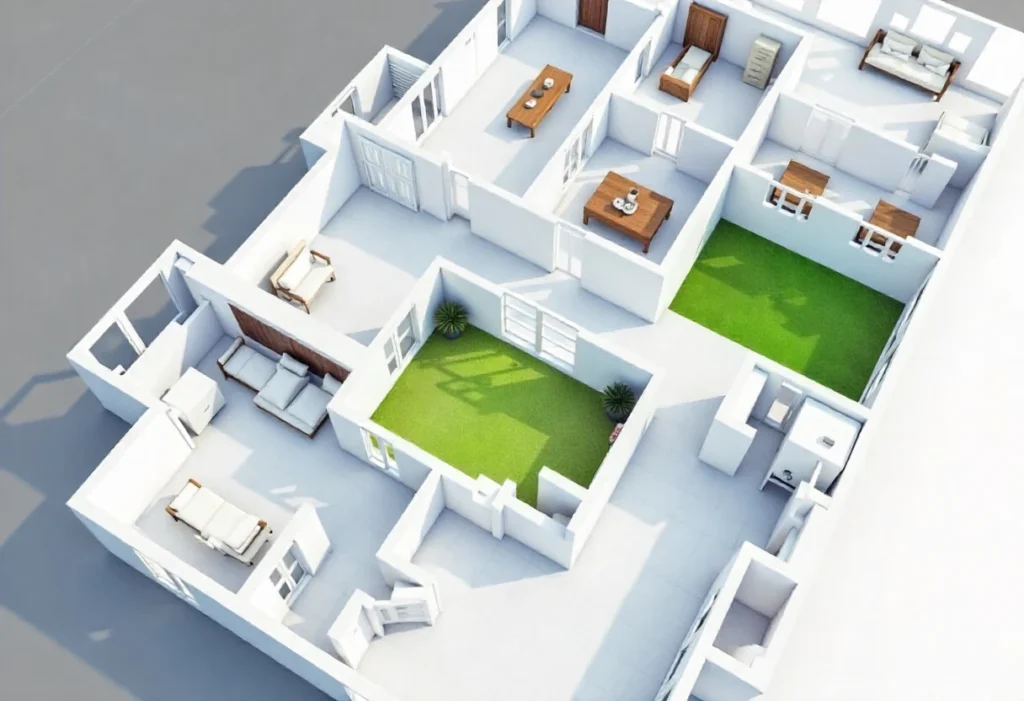When buyers start their property search, the journey is no longer limited to flicking through static photos on a screen. Today’s house-hunters are looking for an immersive experience — one that gives them a genuine sense of space, flow, and potential before they ever step foot inside a home. That’s where interactive floor plans and 3D tours are changing the game.
These tools aren’t just gimmicks. They’re becoming vital elements of property listings, offering a level of engagement that traditional images or descriptions simply can’t match. And for agents, sellers, and buyers alike, the benefits are more than just visual — they’re practical, emotional, and increasingly essential.
The Shift Towards Immersive Property Experiences
Property listings have come a long way from their newspaper classifieds roots. With digital platforms now the primary marketplace for real estate, competition for attention is fierce. A listing has just a few seconds to capture interest — and static images, no matter how professionally taken, often fall short.
That’s where interactive elements come in. A floor plan that allows users to click through each room, zoom in, and see how spaces connect does far more than provide dimensions. It tells a story. It allows buyers to picture themselves living there — where the furniture might go, how the kitchen opens to the garden, how the upstairs bedrooms are arranged.
Add a 3D tour into the mix, and you’re not just showing a home — you’re inviting potential buyers to explore it on their own terms. These tours mimic the experience of walking through a property, offering a dynamic sense of scale and perspective. For overseas or interstate buyers, or even those just too busy to attend multiple viewings, this is invaluable.
Why It’s More Than Just a Visual Tool
There’s a common misconception that these tools are purely about aesthetics — that they’re bells and whistles added for flair. But in practice, they can shape the entire buyer experience.
Firstly, they qualify leads. Buyers who’ve already taken a virtual walkthrough and examined the floor plan in detail arrive at inspections better informed and more serious. They’ve already imagined themselves in the space. This saves time for agents and sellers and helps move the sales process along more efficiently.
Secondly, it builds trust. A listing that’s transparent about layout and proportions — one that doesn’t rely on wide-angle lenses and selective framing — feels more honest. Buyers are more likely to engage with it and less likely to feel disappointed when they see the property in person.
From Curiosity to Commitment
One of the subtle but significant advantages of using these tools is how they transform passive browsers into active enquirers. An interactive floor plan gives people something to do. They’re not just looking — they’re clicking, rotating, zooming. A 3D tour gives them control, lets them set their own pace.
This engagement creates a stronger connection to the property. It moves people beyond idle scrolling into genuine interest. The more time they spend exploring the listing, the more likely they are to get in touch.
The Role of Real Estate Marketing
Incorporating 3D tours and interactive floor plans is no longer a novelty — it’s quickly becoming a staple of effective real estate marketing. Buyers have come to expect a certain level of digital presentation, and agents who invest in these tools often find they stand out in a crowded marketplace.
But it’s not just about keeping up appearances. Smart marketing means understanding how buyers behave, what makes them hesitate, and what nudges them forward. Giving them the ability to explore a home in depth from their laptop or phone taps into the convenience and accessibility they want — and often need — to make a decision.
Cost vs. Value: Is It Worth It?
For sellers and agents considering the investment, there’s often a debate about whether these tools are worth the extra spend. The answer depends on the market, of course, but in many cases, they pay for themselves.
Properties with 3D tours and interactive plans tend to generate more interest, spend less time on the market, and attract more qualified buyers. They also allow a listing to reach wider audiences — including those who can’t attend open homes but are ready to purchase.
And let’s not forget: these tools often help properties stand out not just to buyers, but to the algorithms of major listing sites. Enhanced content tends to rank higher, get featured more prominently, and stay visible longer.
Looking Ahead: The Future of Digital Viewings
As technology continues to evolve, so too will the tools available to showcase property. Augmented reality, live guided virtual tours, and AI-driven personalisation are all on the horizon. But the principles remain the same — helping buyers understand a space, feel connected to it, and take the next step with confidence.
In a market where first impressions count more than ever, listings need to do more than inform — they need to invite. They need to inspire. By embracing interactive floor plans and 3D tours, agents and sellers are giving their properties the best possible platform to shine — and buyers the tools they need to fall in love with a home, before they’ve even crossed the threshold.
It’s not about replacing in-person viewings. It’s about enriching the journey — and bringing listings to life in ways that static images simply never could.
